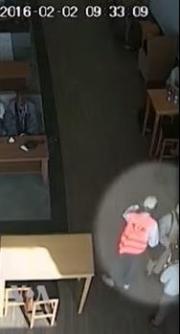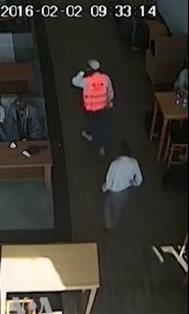As the dawn sun climbed over the skies of Mogadishu on February 2, 2016, one man prepared for his last flight. The man, a teacher at an Islamic School had left his wife and children behind in his hometown of Borama, Somalia. He had abandoned his family for a journey he hoped would take him to the highest levels of paradise. Three hours after sunrise the suicide bomber made his way inside Aden Ade International Airport in Mogadishu, Somalia. The airport terminal opened one year earlier still had that new airport feel. The suicide bomber carried a black bag draped over his right shoulder sans the bomb. He would get the bomb once he cleared through airport security. He made his way towards the powder blue counters of Turkish Airlines only to learn that his scheduled flight to Djibouti was cancelled. Abdullahi Abdisalam Borleh and 69 other passengers were redirected to Daallo Airlines where they had been rescheduled on Daallo flight 3159. After getting his boarding pass and seat assignment Borleh made his way through security.
The insider threat to airport security continues to be one of the greatest threats to aviation. The bombing on Daallo flight 3159 is the direct result of an insider threat. Al-Shabaab terrorists were able to find a way to conceal a bomb inside a laptop and have an insider move the device around airport security. Concealing the bomb and using an insider are two distinct methods terrorists have used to attack aviation. In the CCTV video it appears that the security man in the orange visibility vest is escorting and screening ahead of the man who carried the laptop. The terrorist discovered a way to compromise airport security once again using an individual with knowledge of the airport security measures and how to move around them.
The CCTV picture (upper right) shows two men, one a security person in an orange visibility vest escorting the man with the laptop containing the bomb. Borleh, the suicide bomber can be seen in the picture (upper left) making his way after passing through security to be handed the laptop. Just as the man in the white shirt hands off the laptop to Borleh the man escorting him in the orange vest appears to be talking on a cell phone. The handoff is done quickly and the men continue on their way with the man in the vest and white hat in a screening position ahead of the second man. While CCTV captured the handoff of the laptop bomb it also shows that CCTV can’t prevent these types of insider threats.
Once Borleh, the suicide bomber was armed with the laptop bomb he boarded the Airbus A321 and made his way to row 16. Once there Borleh traded his aisle seats with the person sitting in the window seat. Being seated in a window seat meant that the laptop bomb could be placed next to the wall with the aim to destroy the aircraft. Just about 15 minutes into the flight as the aircraft climbed to its cruising altitude Borleh detonated his bomb. The bomb created a hole in the wall of the aircraft sucking the bomber out and filling the aircraft with smoke. Captain Vlatko Vodopivec and his crew were able to descend and make an emergency landing back at the airport. Thankfully the aircraft had only climbed to about 11,000 feet. If the aircraft had reached its cruising altitude it would have been catastrophic. Thirty miles north of Mogadishu in the town of Balad police recovered the body of the bomber, the only fatality.
In the Dabiq magazine, Issue 12 entitled “Just Terror” highlights once again how terrorists have compromised the security at an airport. ISIS in the article stated that it had “discovered a way to compromise the security of Sharm el-Sheikh International Airport.” ISIS was able to smuggle a bomb onboard a Russian Aircraft in September 2015.
On “30 September 2015,” after years of supporting the Nusayrī tāghūt in the war against the Muslims of Shām, Russia decided to participate directly with its own air force in the war. It was a rash decision of arrogance from Russia, as if it held that its wars against the Muslims of al-Qawqāz were not enough offence. And so after having discovered a way to compromise the security at the Sharm el-Sheikh International Airport and resolving to bring down a plane belonging to a nation in the American-led Western coalition against the Islamic State, the target was changed to a Russian plane. A bomb was smuggled onto the airplane, leading to the deaths of 219 Russians and 5 other crusaders only a month after Russia’s thoughtless decision.
-Dabiq, Issue 12, page 3-
Terrorist are always seeking to discover ways to compromise security during their casing, surveillance and targeting prior to the execution of an attack. As in the attack on the Russian Metrojet on October 31, 2015 or the most recent attack on Daallo Airlines terrorist seek out or create vulnerabilities in aviation security and exploit them. Al-Shabaab used a laptop device in a 2013 attack at the Maka Hotel in Mogadishu. This is not the first time we have seen terrorist conceal a bomb in another container. Nor will it be the last attempt terrorists use to down an airplane with a concealed bomb on board.
On December 21, 1988, Libyan terrorists concealed a bomb in a Toshiba radio cassette player to bring down Pan Am 103 over Lockerbie, Scotland killing 270 people. Al Qaeda was able to conceal a bomb in a video camera with two men posing as journalists. On September 9, 2001 the two so-called journalists were able to detonate the device killing Ahmed Shah Massoud, the leader of the Northern Alliance. Richard Reid, an Al-Qaeda terrorist attempted to detonate an improvised explosive device that had been hidden in Reid’s shoes. Richard Reid has attempted to ignite his shoe bombs on December 22, 2001, while flying on American Airlines flight 63 from Paris to Miami. Reid was thwarted by flight attendants and passengers who were able to subdue him and get the show bomb away from him.
British police arrested a number of individuals in 2006 who were involved with a plot to bring down a number of transatlantic flights concealing the device in a sports drink bottle. Using liquid explosives colored with Tang and injected into sports drink bottles the terrorists would be able to conceal the true nature of the explosives. The terrorists would board numerous transatlantic flights and put the devices together using a disposable camera and light bulb to ignite the explosives. Concealing a bomb to avoid detection has been one track terrorists have been working on for some time. And no one does it better than Al-Qaeda in the Arabian Peninsula’s master bomb maker Ibrahim Hassan al-Siri. Al-Siri’s devices have been built to pass through airport style metal detectors and visual security to reach the target. Al-Siri created an underwear bomb and sent Umar Farouk Abdulmutallab to blow up an aircraft with an underwear bomb. Abdulmutallab boarded Northwest Flight 253 on Christmas Day flying from Amsterdam to Detroit armed with the device concealed in his underwear. When he attempted to detonate his underwear bomb the device failed instead catching fire and he was quickly subdued.
In October 2010, Al-Siri concealed explosive devices in printer cartridges and sent them to the United States. The two explosive devices shipped from Yemen were discovered in England and Dubai after an informant provided detailed information. One month later Al-Qaeda in the Arabian Peninsula (AQAP) in “Inspire Magazine” outlined the details of the printer cartridge plot which they named “Operation Hemorrhage.” Whether or not Ibrahim Hassan al-Siri has shared his numerous techniques for concealing bombs with the Somalia terrorist group Al-Shabaab doesn’t really matter. Al-Shabaab signaled that it has become a regional threat by launching this attack against aviation. We will continue to see terrorist groups attempt to conceal explosive devices in numerous types of containers in order to defeat security measures. Ever since Abu Jihad built and put the first altimeter bomb on a Swiss Air flight and killed 47 people in 1970 the world has been put on notice that terrorists are seeking to attack aviation.
Terrorists will also continue to seek “insiders” who can move a bomb or a bomber around security. The insider threat is the most dangerous threat since it doesn’t matter what type of security one has in place if a “trusted” insider working with terrorists can defeat security measures by using inside knowledge and trust. Either way we must be more creative and alert in combating these two distinct methods to attack aviation. For terrorists globally are still trying to attack and destroy aircraft.





